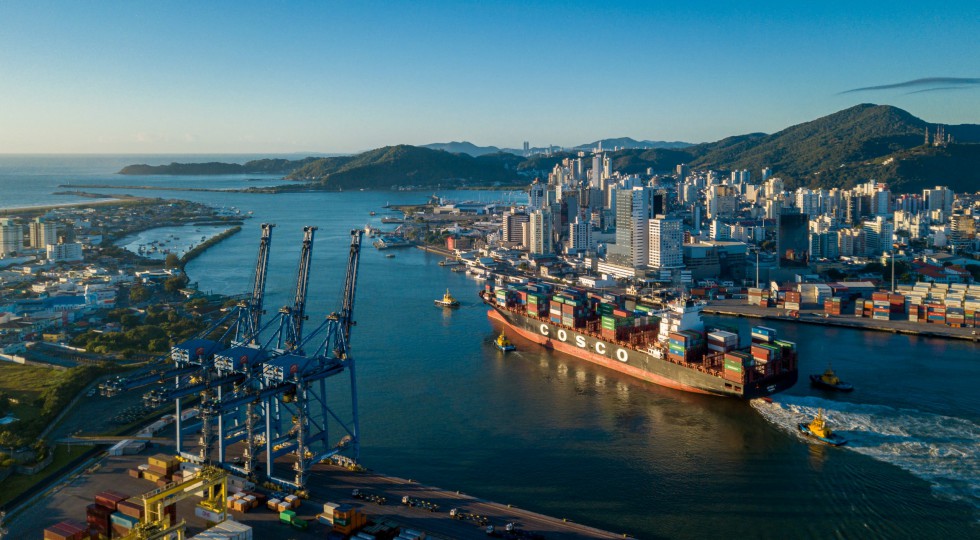The EU-Mercosur Trade Agreement and the Challenges for Multilateralism

PhD Candidate, University of Sao Paulo and the King's College London Brazil Institute
03 July 2024 | #24.07 | The views expressed in this post are those of the author(s) and may not reflect those of UNU-CRIS.
For almost a quarter of a century, negotiations between the European Union and Mercosur for a comprehensive trade agreement have been dragged on by setbacks, delays, timid progress and brief hopes. The very first steps began in 1999, when Mercosur was still young. Starting a free trade area between two blocs was something that had never been done before. The idea was bold - perhaps too bold for the time. So much so that it progressed excruciatingly slowly in the following years, with some occasional spasms every few years keeping it alive. To say it was doomed to fail is untrue; the talks did succeed in 2019 when an agreement was reached by both sides after no less than 38 rounds of talks. Still, it failed to achieve ratification in every legislative body necessary. Negotiations have resumed at a much higher level in the past couple of years and somehow managed to spark even more controversy at every turn.
On the surface, the agreement did look quite formidable. It would create the world’s largest free trade area, with some 770 million inhabitants and a fifth of the world’s GDP. It would slash over 90% of tariffs between the two blocs over the following 20 years, while granting preferential rates to the remaining items, as well as establishing guarantees on a variety of other themes, such as environmental standards, government procurement contracts and clauses on intellectual property. With almost €100 billion in trade flows between the two, the deal would expand the relationship between the two continents, facilitating investment as well as bringing different consumer markets together. Nevertheless, it must be considered that the agreement would be more impactful to Mercosur than to the EU. While trade with Europe constitutes some 20% of all trade conducted in the South American bloc, Mercosur represents just 2% of European trade. The European Commission estimates that the EU would benefit from 0,1% to 0,3% in GDP growth from the treaty, whereas Mercosur's GDP would be expected to grow around 2%. This relative asymmetry is compensated by a somewhat usual mainstream argument, in that Mercosur countries do hold large reserves of raw materials, including abundant deposits of lithium, nickel, graphite and other rare earth minerals - which are all much sought-after for technological components in Europe.
Politically, for Mercosur it would provide an undeniable boost of legitimacy and purpose, as the grouping has been plagued by a lack of direction for some years now. Despite Bolivia’s recent ascension into the bloc, Mercosur never achieved its goal of becoming a common market, and today works as an imperfect customs union. For the EU, the agreement could serve as a springboard for further cooperation with Latin America, a region outside the European radar for some two decades now.
Even with all the clear drivers that make such a deal a very sensible idea, hopes seem to be at an all-time low again. Despite much protagonism from both parties in trying to get the agreement through, we can see that any hopes going forward were snuffed out by the last visit from Emmanuel Macron to Brazil in late March. While the visit advanced negotiations in other areas and yielded some picturesque photoshoots with Brazil’s Lula, the French position remains strongly opposed to the deal, rallying a host of European decision-makers behind them.
On the European side, there are significant political and civil society concerns over environmental matters, particularly towards goods produced from deforested Amazon lands. Meanwhile, France leads the bulk of the opposition on protectionist grounds. France remains adamant that the agreement would be harmful to its agricultural producers. Heavily pressured by farmers, the French argument is that European producers needed to abide by much higher environmental standards than their South American counterparts, creating an unfair competition - despite being some of the most subsidised producers in the world.

Mercosur countries, in a similar fashion, argue that exposure to much more competitive European manufactured goods would be very harmful to the heavily protected Mercosur industries. Europe remains very efficient in several industrial sectors in which Mercosur countries have strived to cultivate their own industries, from electronics to pharmaceuticals, and even aerospace. Many such industries manage to stay afloat in the Mercosur due to high import barriers and significant subsidies. The bloc is, in itself, a way of protecting these industries while maintaining some level of economic integration between countries with similar levels of development. For instance, Argentina is Brazil’s fourth largest export market (if we are to count the EU as a single destination), and while Brazilian exports to China or the EU are made up mostly of primary products, its exports to Argentina are mostly of industrialised goods. Despite some safeguards, the agreement would eventually significantly erase these protectionist barriers. Moreover, Brazil also expressed its reservations about the environmental standards expected from the EU, even more so when sanctions and reprimands can be issued should these standards be breached. More unexpectedly, President Lula also criticised clauses on government procurement. Brasilia still sees government contracts as important drivers for economic development, and a source of demand for national companies. Opening such contracts to foreign companies - even if they are more competitive- is still regarded as a blow to such an inductor for growth.
Despite all this, both sides - at least officially- declare they remain open for negotiations. In Europe, countries such as Germany, Portugal and Spain remain largely partial to the agreement. In the Mercosur, the Brazilian government still insists on trying to salvage something out of the negotiations. Even Argentina’s Milei defied expectations and showed interest in going through the agreement. However, it is difficult to imagine that any new talks would bear fruit. One could imagine these efforts still linger as a form of avenging the sunken costs of a quarter-century of negotiations. There is also some hope that an agreement could be achieved if negotiations restarted from a blank slate, although it would be a matter of time before the same obstacles reappear in these new talks. Now, if such “blank slate” negotiations are to follow the same path, taking another 25 years of talks plus 20 years of implementation, they might as well pay off only by the XXII century.
If anything, the failure to achieve an agreement is a loss. It is a loss for Mercosur, the EU and a world that still cares about multilateralism. The global stage is increasingly more polarised, with tensions rising between the United States and China despite recent de-escalation efforts. China's influence in Latin America has grown from insignificance in the early 2000s to becoming the main trade partner for almost every South American country, with trade flows still increasing year after year - in both scale and scope. China’s financial protagonism in the region is also rising, from foreign direct investment to sovereign credit lines. Meanwhile, the United States, ever more concerned over its Pacific interests, tries to hold on to what it can in South America. On the other side of the Atlantic, security concerns over Russia have pushed Europe to rekindle its relationship with NATO, and, by extension, the US. While this simplifies much broader developments, there is no denying that multilateralism is losing its priority in either continent.
With our becoming more unpredictable by the day, seeking new avenues for multilateralism and interdependence is not just optimal but crucial for continued global stability. This agreement would be the very first instance of an inter-bloc free trade zone, something that could pave the way for future agreements of this type between other economic blocs, a brand new modality of multilateral economic integration. Beyond economic prospects, the agreement would also serve as an important geopolitical channel for both cooperation and hedging in our tumultuous days. Closer ties between the two blocs could help them diversify their relationships, and perhaps even capitalise on this diversification to obtain leverage when negotiating with either Washington or Beijing.
Today, the agreement's future remains unclear- albeit with pessimistic prospects. If anything, it is not just a frustration over wasted past decades of negotiations, but a loss for the future of multilateralism.
